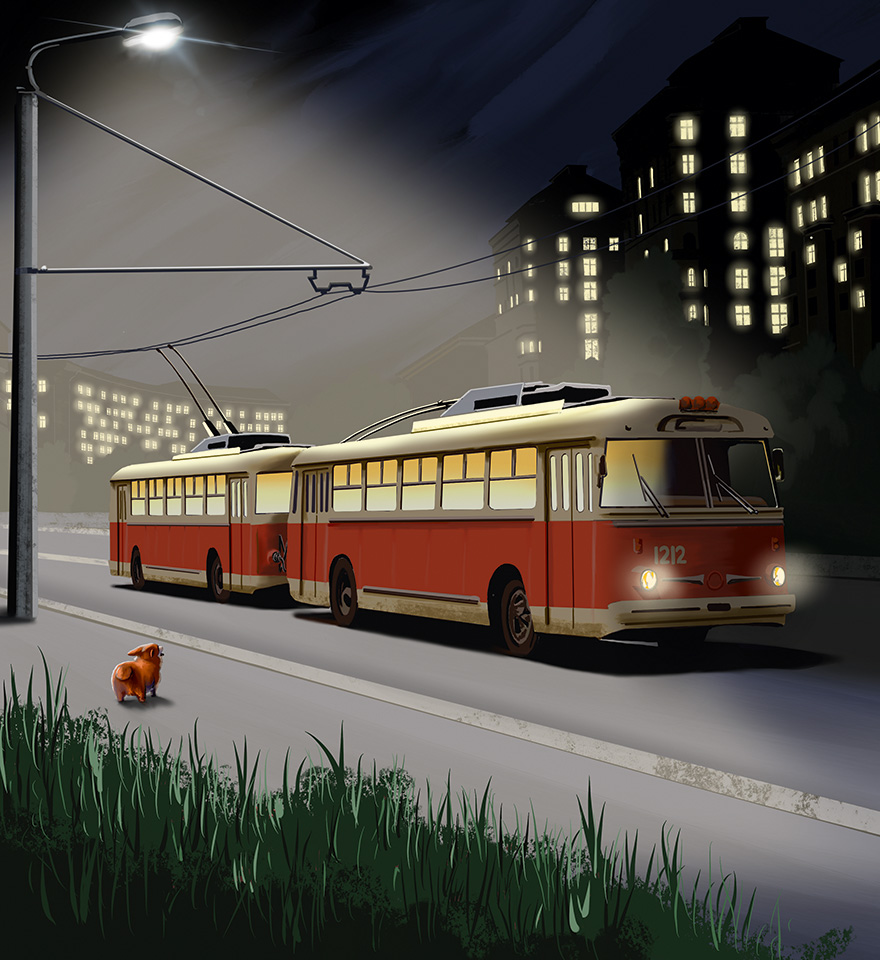VeklychVolodymyr
November 8, 1938, Cherneshchyna village, USSR (today Kharkiv Region, Ukraine) —
August 10, 1993, Kyiv, Ukraine
Trolleybus train
It’s hard to believe, but more than 160 illegal trolleybuses ran through Kyiv from 1966 to 1976. More accurate to say, illegal trolleybus trains. What exactly is this thing?

In the 1960s, trolleybus routes No. 6 and No. 18 were the busiest. Both passed through the central part of the city, there were not enough drivers, so crowds of unhappy passengers gathered at public transport stops. But there was a shortage of drivers. It seemed that the problem had no solution. And that was when 25-year-old engineer Volodymyr Veklych became the director of the October trolleybus depot (today Trolleybus repair-operational depot № 2 of Kyivpastrans). Soon, he proposed connecting two trolleybuses, transforming them into a trolleybus train.
Design and testing lasted two years. In order for the system to be safe for passengers, pedestrians, and car drivers, it was necessary to synchronize the operation of engines and braking systems, as well as improve the control system so that the trajectories of both trolleybuses coincide. The connection system was called the “Veklych system”.
The trolleybus train was tested in the most difficult weather conditions — in rain and snow, during day and night, on descents and ascents. Trolleybuses were filled with sandbags to work out all the situations that drivers might face while transporting passengers.
On June 12, 1966, the world’s first trolleybus train was introduced on route No.6. It was so unusual and so long (22 meters in length) that there were simply no standards that it could meet. So basically, it was illegal.
Despite the lack of standards and other regulatory documents, the trains were quickly put into mass production at the Kyiv plant of electric transport. This is not surprising, because in 1968 alone, the economic effect on route No. 6 alone brought about 160 thousand rubles. Back then it was possible to buy 32 cars or 80 thousand kilograms of marshmallows for this amount.
In the 1970s and 1980s, trolleybus trains were introduced in other cities: Kharkiv, Dnipro (previously called Dnepropetrovsk), Kherson, Odesa, Donetsk, Minsk, and even in Sofia, Riga, Almaty, Tallinn, and other cities. In 1994, the trolleybus train passed through the streets of Kyiv for the last time but in Donetsk, it was in operation until 2007.

The trolleybus trains were introduced on route No.18 only in 1972, when the route was slightly changed and the number of sharp bends was reduced.
In 1976, another test was conducted in Kyiv, this time three trolleybuses were combined into a train. The length of this train was 35 meters. However, it did not progress beyond the tests.
To calculate the annual economic effect of using new equipment, you need to compare all the production costs for the year when the old equipment was used and when the new one was used under the same conditions. These expenses will include wages, maintenance, repair of equipment, and so on. The difference between these costs will constitute the economic effect. If earlier the costs were higher, then the effect will have a “+” sign.